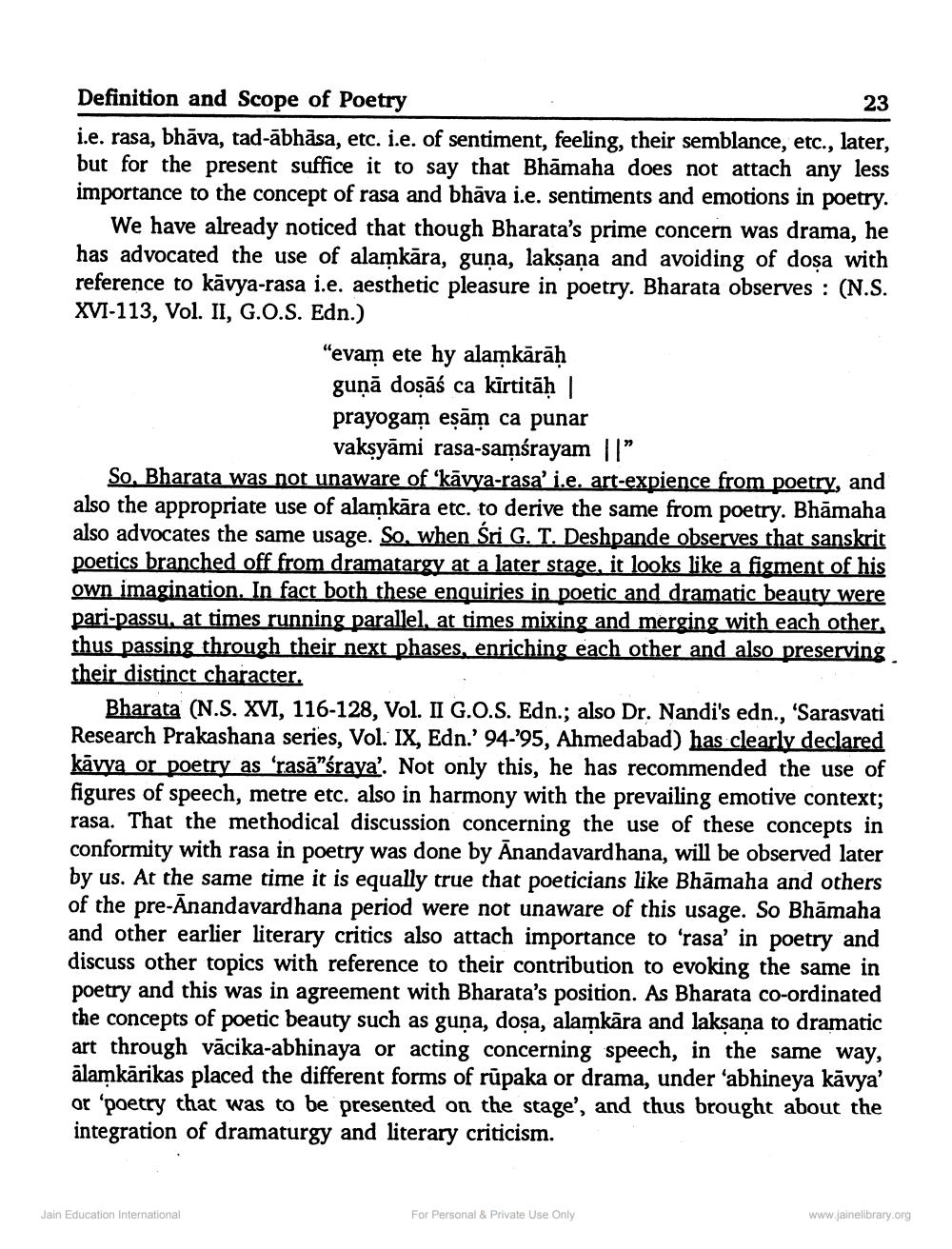________________
Definition and Scope of Poetry
23
i.e. rasa, bhāva, tad-ābhāsa, etc. i.e. of sentiment, feeling, their semblance, etc., later, but for the present suffice it to say that Bhamaha does not attach any less importance to the concept of rasa and bhāva i.e. sentiments and emotions in poetry.
We have already noticed that though Bharata's prime concern was drama, he has advocated the use of alamkāra, guṇa, lakṣaṇa and avoiding of dosa with reference to kavya-rasa i.e. aesthetic pleasure in poetry. Bharata observes: (N.S. XVI-113, Vol. II, G.O.S. Edn.)
"evam ete hy alamkārāḥ guņā doṣāś ca kīrtitāḥ | prayogam eṣām ca punar vakṣyāmi rasa-samśrayam ||"
So. Bharata was not unaware of 'kavya-rasa' i.e. art-expience from poetry, and also the appropriate use of alamkāra etc. to derive the same from poetry. Bhāmaha also advocates the same usage. So, when Śri G. T. Deshpande observes that sanskrit poetics branched off from dramatargy at a later stage, it looks like a figment of his own imagination. In fact both these enquiries in poetic and dramatic beauty were pari-passu, at times running parallel, at times mixing and merging with each other, thus passing through their next phases, enriching each other and also preserving their distinct character.
Bharata (N.S. XVI, 116-128, Vol. II G.O.S. Edn.; also Dr. Nandi's edn., 'Sarasvati Research Prakashana series, Vol. IX, Edn.' 94-'95, Ahmedabad) has clearly declared kavya or poetry as 'rasa"śraya'. Not only this, he has recommended the use of figures of speech, metre etc. also in harmony with the prevailing emotive context; rasa. That the methodical discussion concerning the use of these concepts in conformity with rasa in poetry was done by Anandavardhana, will be observed later by us. At the same time it is equally true that poeticians like Bhāmaha and others of the pre-Anandavardhana period were not unaware of this usage. So Bhāmaha and other earlier literary critics also attach importance to 'rasa' in poetry and discuss other topics with reference to their contribution to evoking the same in poetry and this was in agreement with Bharata's position. As Bharata co-ordinated the concepts of poetic beauty such as guna, dosa, alamkara and lakṣaṇa to dramatic art through vācika-abhinaya or acting concerning speech, in the same way, alamkarikas placed the different forms of rūpaka or drama, under 'abhineya kāvya' or 'poetry that was to be presented on the stage', and thus brought about the integration of dramaturgy and literary criticism.
Jain Education International
For Personal & Private Use Only
www.jainelibrary.org




